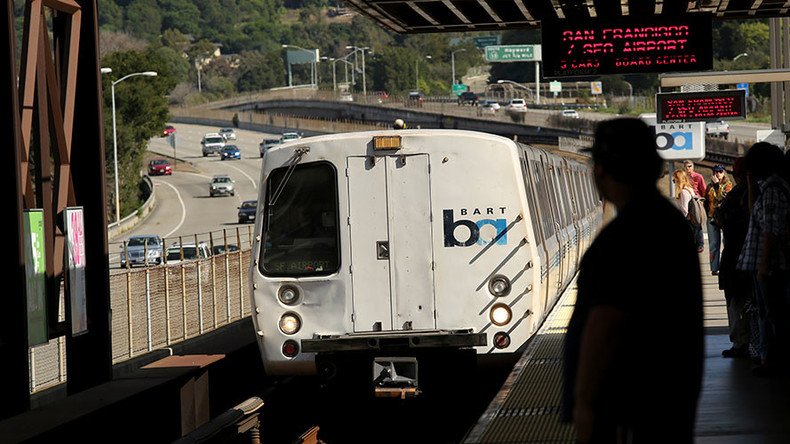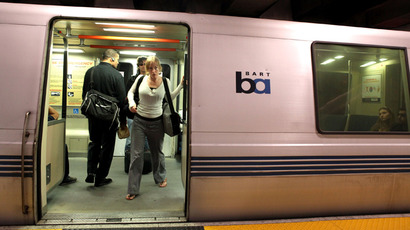Bay Area Rapid Transit says showing crime videos would be racist

Public transportation officials serving California’s San Francisco Bay area have refused to release surveillance camera videos of crime incidents, saying that doing so would “create a racial bias” and accusing the media of exploiting them for ratings.
Last week, the Bay Area Rapid Transit (BART) announced it was no longer issuing press statements about criminal incidents within the system, but sharing the data with the website CrimeMapping.com instead.
“Furthermore, disproportionate elevation of crimes on transit interfaces with local media in such a way to unfairly affect and characterize riders of color, leading to sweeping generalizations in media reports and a high level of racially insensitive commentary directed toward the District through our social media channels, email, and call centers,” assistant general manager Kerry Hamill said in the announcement.
This prompted Debora Allen, member of the BART board of directors, to ask what skin color had to do with anything, according to an email exchange published by San Francisco’s KPIX-TV.
To recap - its YOU racist BART riders that create negative stereotypes, not the actual criminals robbing&beating ppl https://t.co/jIFZrlBxEa
— Kira (@RealKiraDavis) July 11, 2017
In her response, Hamill pointed to responses received after a June 30 incident, when a woman on a train had her phone snatched away by one of “about a dozen teenagers,” who got off the train at the Coliseum stop in Oakland.
The incident prompted a voicemail that “used racist and incendiary language” and many social media posts “used patently offensive language that often involved racial slurs,” Hamill wrote, adding that “no news articles ever referenced the race of the offenders yet some members of the public leapt to their own conclusions.”
Two days prior to that incident, on June 28, a group of four teens attacked a passenger and made off with a cell phone at Dublin station. Another major incident happened at the Coliseum stop on April 22, when some 40-60 teenagers boarded the train, robbed seven passengers, and beat up two.
BART is refusing to release the surveillance footage from the three incidents.
“If we were to regularly feed the news media video of crimes on our system that involve minority suspects, particularly when they are minors, we would certainly face questions as to why we were sensationalizing relatively minor crimes and perpetuating false stereotypes in the process,” Hamill wrote.
California’s law protecting “juvenile police records” prevents the agency from showing the surveillance video, BART spokesman Taylor Huckaby told KPIX. One of the people arrested for the April 22 attack is 19, the outlet noted. Even if the faces of juveniles were blurred, Huckaby says, watching the videos would be “pointless gawking.”
Hamill agreed, saying that “the media’s real interest in the videos of youth phone snatching incidents isn’t the desire for transparency but rather the pursuit of ratings.” The public can be fully informed about crimes that happen on BART “without being shown images that will inflame some members of the public and paint the transit agency in a poor and ultimately misleading light,” she added in the email to Allen.
The board member is not convinced.
“I think people are genuinely concerned ‒ they are fearful about the stories that have come out about the recent attacks, the assaults, the thefts,” Allen told KPIX. “What is the priority of BART? Is the safety of the passenger ‒ of all passengers ‒ is that a lesser priority than the race bias issue?”
Hamill says the media sensationalize reports of crime on trains, and that in the days following the June 30 phone-snatching incidents there were over 118 assaults and 33 robberies in the area immediately surrounding the Coliseum station.
“All of these incidents were ignored by local media,” she wrote, adding, “They know that video of these events will drive clicks to their websites and viewers to their programs because people are motivated by fear.”
In justifying the authority’s position, Hamill cited the 2009 death of Oscar Grant, a 22-year-old African-American shot by a BART police officer who was responding to a brawl that broke out at Fruitvale station on New Year’s Day.












